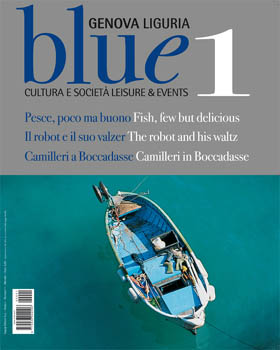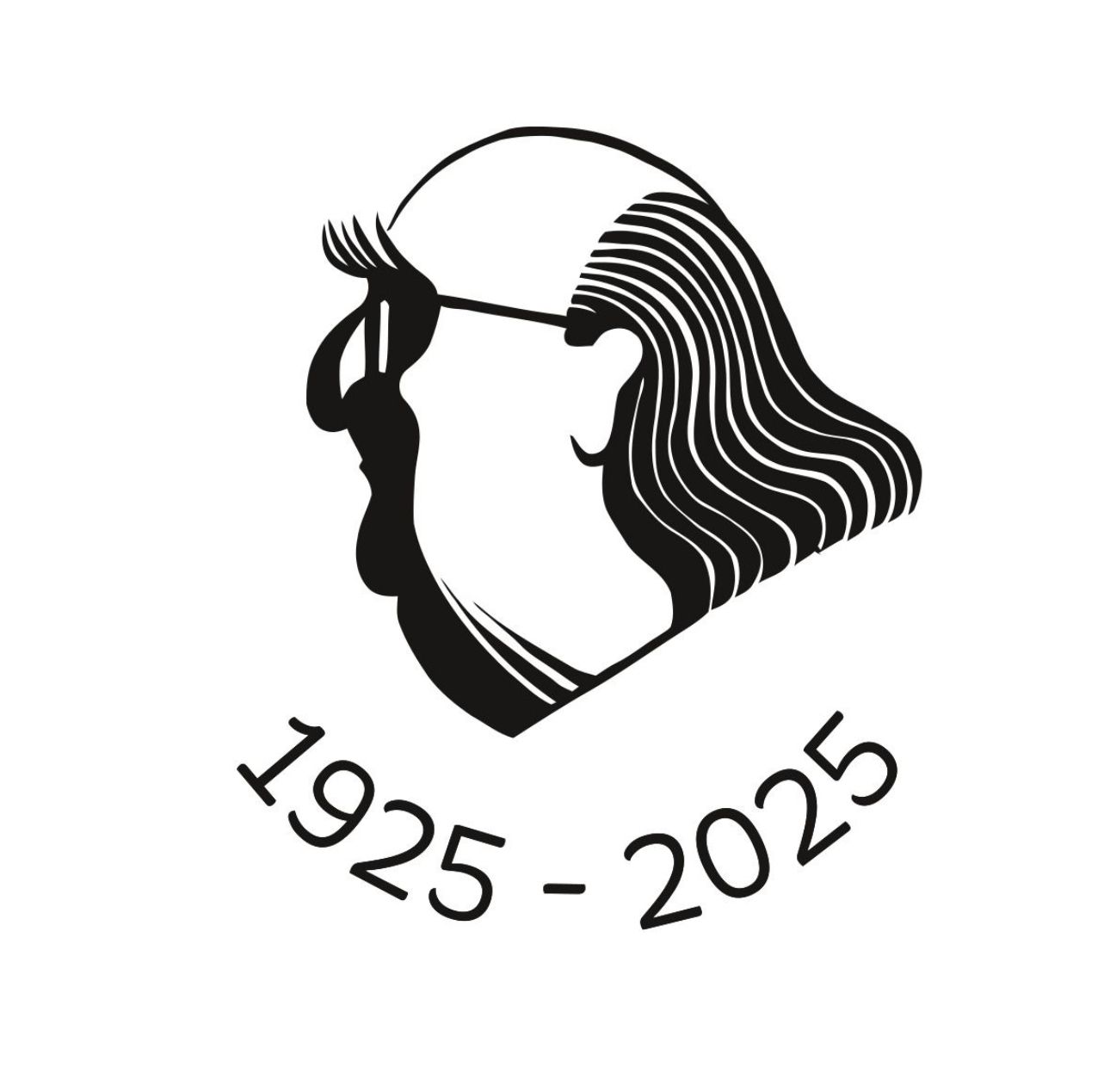
Cliccare qui per
leggere il racconto in PDF
La ragazza di Boccadasse
Con questa breve testimonianza voglio innanzitutto fare i miei migliori auguri per il primo numero di questa bella rivista “Blue”.
Ci tengo molto a ringraziare tutta la redazione di “Blue” per avermi dato l’occasione di ripensare alla bellezza di Genova.
Andai per la prima volta a Genova nel 1950, a venticinque anni, perchè avevo vinto ex aequo il premio di poesia indetto dalle Olimpiadi culturali della gioventù. Vissi una settimana incantata a contatto con personaggi come Sibilla Aleramo, Giacomo De Benedetti, Galvano Della Volpe, Massimo Bontempelli e altri che facevano parte delle varie giurie.
Ma, appena terminavano gli incontri, mi mettevo a girare per la città da solo. Perchè già nel tratto dalla stazione all’albergo, il primo giorno, mi ero subito reso conto che tra me e quella città era scattato un colpo di fulmine.
Perché? Perché era una città di mare come di mare era il mio paese? No, ero stato in tante città portuali e non avevo mai provato la stessa sensazione. Allora cos’era? È assai difficile spiegare perché ci si innamori di una persona, figurarsi di una città. Beh, forse era la perfetta armonia tra gli abitanti e le loro case, tra gli abitanti e il loro cielo, tra gli abitanti e il loro mare, forse era la parlata strascicata e indolente, forse erano i volti che incontravi verso il porto, cotti dalla salsedine ma cosi pronti ad aprirsi in un bonario sorriso.
Tempo prima m’era capitato di leggere un libretto di versi di un giornalista genovese, Tullio Cicciarelli, che poi conobbi, e quel libretto mi servì da guida. Cicciarelli parlava di piazza Di Negro? Ed io via a piazza Di Negro, ripetendo dentro di me le parole del poeta.
Al terzo giorno trovai più che una mia compagna, una guida per il mio vagabondaggio. Una bella ragazza che un pomeriggio mi portò a casa sua, a Boccadasse. Altro colpo al cuore. Passai qualche ora alla finestra dalla quale si vedeva la discesa che portava alla spiaggetta e il mare che sciabordava pigramente. Sentii mio quel paesaggio, come se mi fossi portato appresso un pezzo della mia Sicilia. M’è rimasta dentro così a lungo che quando ho cominciato a scrivere di Livia, la fidanzata genovese del commissario Montalbano, m’è parso più che naturale farla abitare a Boccadasse.
La seconda volta ci sono stato molti anni più tardi per dirigere un romanzo sceneggiato radiofonico presso la sede Rai di Genova. Ho voluto avere come interpreti i bravissimi attori del Teatro Stabile di Genova. E anche in quell’occasione, appena finivo di lavorare, me ne andavo in giro. Fu in una trattoria del porto che incontrai un trentenne siciliano, che da bambino, si era trasferito con i suoi a Genova. Ad un certo punto mi rivelò che, mentre a casa con i suoi parlava in dialetto siciliano, spesso gli capitava di “pensare” in genovese. Ho scritto “La mossa del cavallo” ricordandomi di questa persona. Ma per farlo “pensare” in genovese mi sono fatto una sorta di full immersion nelle poesie di Edoardo Firpo, da ‘O Grillo cantadò a ‘O Fiore in to gotto. Poi, per la revisione del mio improbabile genovese, la mia cara Gina Lagorio, alla quale sono stato debitore di molte cose, mi segnalò Silvio Rjolfo Marengo che non finirò mai di ringraziare.
È stato per presentare proprio questo mio romanzo che sono tornato a Genova.
La presentazione avvenne alle Vele di Piano, gremitissime.
Quella sera ebbi modo di sentire che il mio amore per Genova era ampiamente ricambiato. E l’indomani mattina mi feci portare a Boccadasse. Se non ci fossi andato, avrei fatto uno sgarbo a Livia.
The Girl From Boccadasse
With this short testimony I would first like to give my very best wishes to the first issue of this fine magazine “Blue.” I think it is an important and very well constructed enterprise.
I want to thank the team of Blue for giving me the opportunity to think back on
the beauty of Genoa.
The first time I went to Genoa was in 1950, when I was twenty-five, as I had won a first prize ex aequo for a poetry competition organized by the Youth Cultural Olympics. I had a magical week in the company of people like Sibilla Aleramo, Giacomo De Benedetti, Galvano Della Volpe, Massimo Bontempelli and others who were part of various juries.
As soon as the events ended, I started to explore the city on my own. Right from the first day, going from the station to my hotel, I realized that between me and this city
a love-story had started.
But why? Was it because it was a sea city and my own city is on the sea? No, I had
already visited many port cities and none of them had affected me in this way. So what was it? It’s difficult enough to explain why we fall in love with a person, let alone a city. Well, it might have been the perfect harmony between the inhabitants and their homes, between the inhabitants and the sky or between the inhabitants and the sea. Maybe it was the slow and sluggish way of talking, maybe it was the faces that one met down by the port, sun and saltbaked but always ready to open up in a good-natured smile.
Some time before, I had happened to read a book of verse by the Genovese journalist, Tullio Cicciarelli (whom I later met), and that book served as my guide. Cicciarelli wrote about Piazza Di Negro? Off I went then to Piazza Di Negro, silently reciting the words of the poet.
On the third day, I found more than a companion or a guide for my wanderings. A beautiful girl who took me one afternoon to her home, in the part of town named Boccadasse. Another heart-stopping experience. I spent a few hours at the window where you could see the way down to the beach where the sea lazily lapped the shore. That landscape felt like mine, as though I had brought a piece of my own Sicily with me.
It stayed with me for so long that when I started writing about Livia, Montalbano’s Genovese fiancée, it only seemed natural to have her live in Boccadasse.
The second time I was there was many years later, to direct a radio drama at the RAI studios in Genoa. I used the talented actors from the Teatro Stabile of Genoa. And
again, as soon as work was over, I went to look around. It was in a tavern in the port that I met a thirty-year-old Sicilian who, as a child, had moved with his family to Genoa. At a certain point he revealed that at home he spoke in the Sicilian dialect but he often happened to “think” in Genovese. The memory of this person led me to write
"Knight’s Move." But to make him "think" in Genovese, I did a sort of full immersion in
the poetry of Edoardo Firpo, from ‘O Grillo cantadò to ‘O Fiore in to gotto. Then, for the revision of my improbable Genovese, my dear friend Gina Lagorio, to whom I am in debt for many things, introduced me to Silvio Marengo Rjolfo, whom I shall always have reason to thank.
It was in order to present this novel that I came back to Genoa.
The presentation took place at the packed “Vele di Piano”.
That evening I could feel that my love for Genoa was amply returned.
And the next morning I asked to go to Boccadasse. If I hadn’t gone, I would have offended Livia.
Andrea Camilleri
(Pubblicato
su Blue, n.1, aprile 2009)
|




